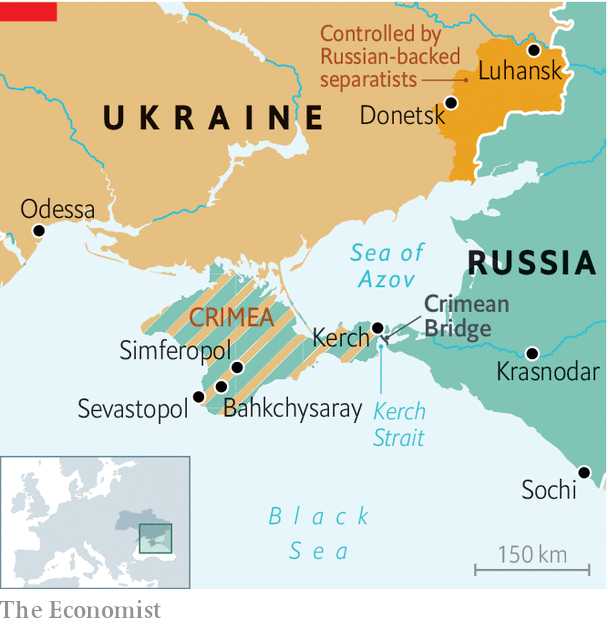The Crimean peninsula is a sticking point in bringing an end to the Ukraine / Russian War. Ukraine’s public position is that they will not end the war until all the Ukraine territory is returned or won back – and that includes Crimea. Russia’s position has always been Crimea is part of Russia and will stay that way.
The history and geography behind these conflicting claims and positions place a serious roadblock to negotiations.
Geography
Crimea is a peninsula jutting out into the Black Sea. For two centuries it has been Russia’s, then the Soviet Union’s year-round ice-free port. Sevastopol has been the home of the Russian Black Sea Fleet since 1783 (Wikipedia).
The peninsula has held strategic importance to various empires and countries since Roman times because of its command of much of the Black Sea.
Recent History
Despite its long history, we only need to look to the period after World War II. After the war, the state of Crimea changed from autonomous republic to a part of the Russian Republic within the Soviet Union. In 1954, in the spirit of goodwill, Soviet Premier Khrushchev transferred Crimea from Russia to Ukraine. He never expected the break up of the Soviet Union and how that would affect future relationships.
After the dissolution of the Soviet Union, Crimea was recognized as part of Ukraine, albeit with a restless population of many Moscow supporters. The port of Sevastopol was agreed to continue to be the home of the Black Sea Fleet under Russian control, along with 80% of the fleet itself.
A series of conflicts between the Ukrainian government and the citizens still loyal to Russia led to unrest on the peninsula.
In 2014 political unrest in Ukraine led to the ousting of Ukrainian President Viktor Yanukovych, the Ukrainian President that supporter ever closer relations with Vladimir Putin. Crimean citizens protested against the change. Putin took advantage of this discord and Ukrainian preoccupation with internal politics to annex Crimea. I pre-determined vote on whether to join Russia was held, with the expected results.
Dilemma
Both Ukraine and Russia define the Crimea as an integral part of their respective countries. Russia built a bridge to Crimea, finally giving the peninsula direct access to Russia proper, but it still relies on power and water from Ukraine. With a population of mainly Russians, taking Crimea back would be very difficult. But leaving Crimea in Russian hands would reward aggression.
Many of the initial attacks on Ukraine were launched from Russian Crimea, making the area even more of a powder keg.
Possible Resolutions
In my opinion, Crimea should stay part of Russia or become an independent nation. Trying to roll the current status back to Ukrainian control would be too difficult and probably against the wishes of the residents. The best solution would be a free election allowing the local population to decide their own path forward, but neither Russia or Ukraine have proposed this because it would run against their local claims and mean seceding land to their opponent.
As part of a proposed solution, Russia would have to allow free access from the Sea of Azov into the greater Black Sea. This type of arraignment is a situation already replicated in the Black Sea. Turkey has control of both sides of the waterway from the Black Sea to the Mediterranean, also connected by bridge, but international agreements allow free travel through the strait.
However any possible solution waits until the Russian / Ukrainian War is resolved or as part of any overall peace deal. The status of Crimea is essentially moot at this point, even as it continues to be a flash point in the conflict.



